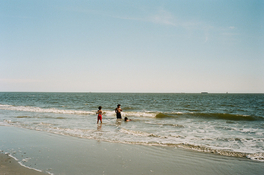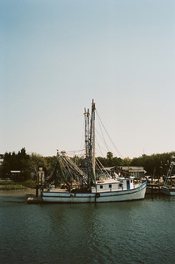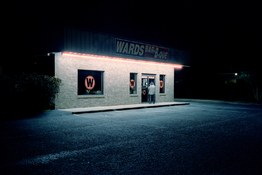[...]What does this actually mean and can this apply to 35 mm. I’m thinking it’s got something to do with pushing pulling?
What it means is that you're over-exposing your film by however many stops (ISO 400 film at ISO 200 is one stop, ISO 100 is two stops, ISO 50 is three stops...) and yes, it applies to 35mm film. It applies to all film since all film has an ISO rating so shooting over- or under-exposed is possible on any film, although I find shooting under-exposed on any film to be more detrimental than shooting over-exposed.
Pushing and Pulling is different than over- and under-exposing. Sort of.
Say you head out to shoot for the day and you only have a single roll of Portra 800, but it's very bright outside. You could stop down and shoot a high shutter speed to compensate for the bright light or you could pull your film, which means you would rate it in the camera at, say, ISO 200 so that you could shoot lower shutter speeds or wider apertures and then you tell the lab that you pulled your film by two stops and they will adjust development time accordingly.
The adverse is also true for lower speed films. Say you go out and take a roll of ISO 400 film, but it's darker outside than you anticipated and you want to hand-hold your camera at a higher shutter speed. You would then push your film, which means you rate it at a higher ISO than it is on the box (say 3200 which is 3 stops under-exposed). You take it to the lab and tell them you pushed your film three stops and they develop accordingly.
There are pros and cons to pushing and pulling. More cons for pushing than their are for pulling.
Pushing is handy when you have slower film but need more light. The trade-off is that you typically end up with a much more contrasty image and grain is more pronounced. I wouldn't suggest pushing a film that already exhibits a lot of grain as it will just get worse. That being said, a grainy shot of something important is probably better than no shot at all. Pulling is handy when you want to shoot wide open in bright daylight or when your camera shutter is limited (i.e., an older camera that only goes up to 1/500 or something) but have a higher-speed film. The tradeoff here is that pulled film can sometimes lose contrast and get a little bit flat and muddy, probably from the shortened development time.
It's hard to plan for every lighting scenario and it sucks to get caught with a roll of film in your camera that's half-shot and the lighting changes. You can't push or pull part of a roll. If you tell the lab you pushed or pulled by x-stops, they're going to do the entire roll. Versus over- or under-exposing some frames intentionally and just letting the image happen the way it happens.










